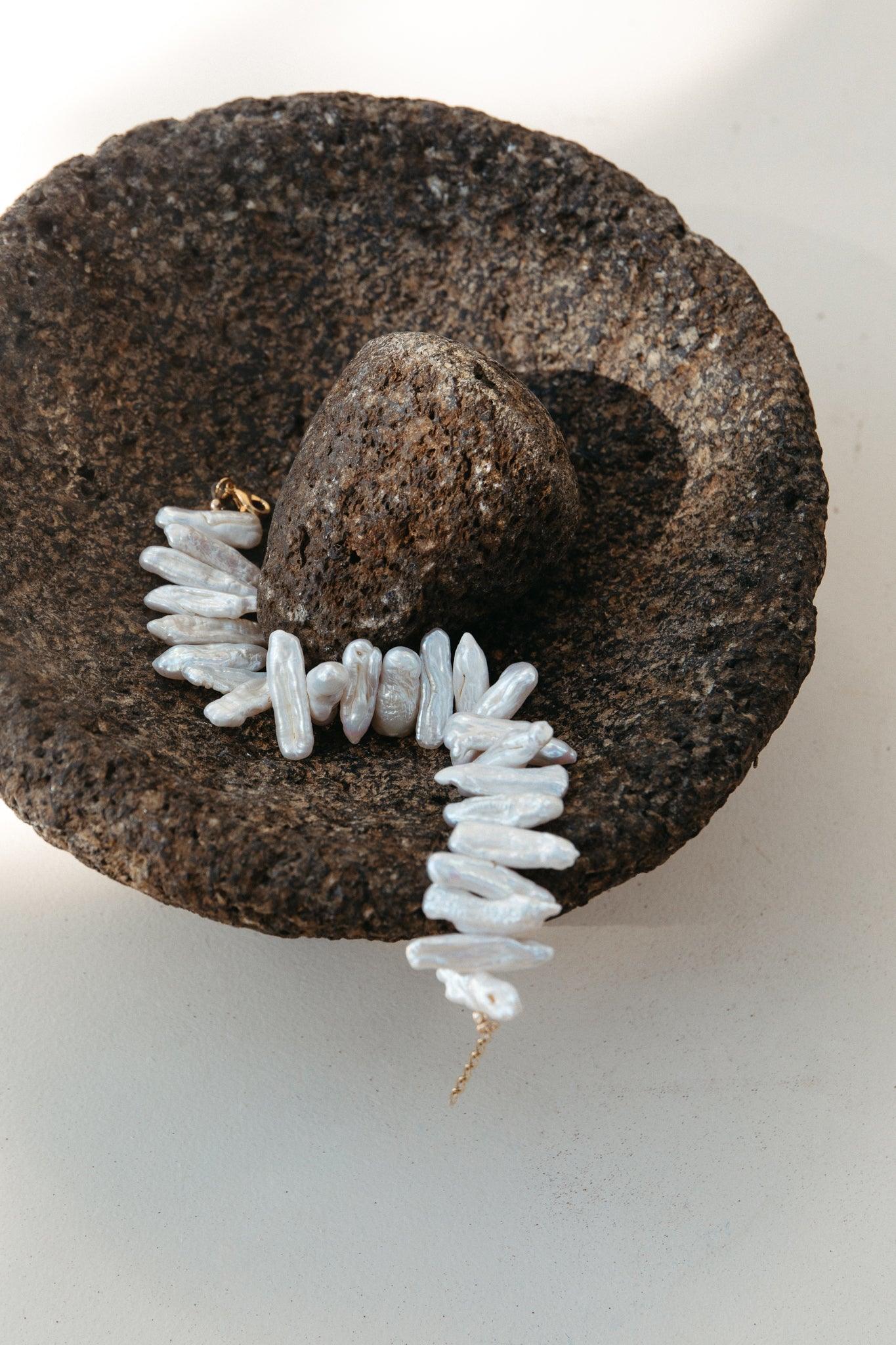When it comes to choosing jewelry, many consumers turn to stainless steel, attracted by its affordability and reputation for durability. But behind this apparent bargain lie numerous drawbacks, both aesthetically pleasing and in terms of environmental impact and material quality.
In this article, we'll explore the negative aspects of stainless steel , including its environmental impact , poor composition , unattractive gold color , and its association with low-end jewelry . We'll also see why high-quality gold plating , and especially recycled gold, is a much more noble, aesthetically pleasing, and sustainable alternative.
1. Stainless steel: an underestimated ecological impact
One of the main arguments in favor of stainless steel is its durability. But this perception obscures a major problem: its disastrous environmental impact .
Polluting and energy-intensive production
Stainless steel is an alloy composed primarily of iron, chromium, and nickel. Its extraction and production require massive amounts of energy, generating a significant carbon footprint.
- Destructive Mining : Stainless steel production begins with the extraction of iron, nickel, and chromium, metals whose mining leads to deforestation, soil pollution, and groundwater contamination.
- Highly polluting foundries : Transforming these metals into stainless steel requires high-temperature furnaces that emit large amounts of CO₂ and fine particles.
- Toxic chemical treatments : To ensure its resistance to corrosion, stainless steel undergoes chemical treatment using acids that are harmful to the environment and health.
Limited recycling
Unlike gold, which is fully recyclable without loss of quality, stainless steel poses a limited and complex recycling problem. It is often mixed with other metals and contaminants, which complicates its reuse and results in significant waste.

2. Poor quality composition: nickel and allergies
Stainless steel is often touted as hypoallergenic, but this isn't always the case. Many steel alloys contain nickel , a metal known to cause allergic reactions in many people.
- Irritations and redness : Many people develop allergies to the nickel in stainless steel, which causes itching, redness, and even blisters.
- Toxicity Issues : The chromium in steel can also be problematic because in some forms it is toxic to the body and the environment.
Conversely, high-quality gold-plated jewelry, especially those that use thick plating (3 microns or more), do not contain nickel and are much kinder to sensitive skin.

3. A golden color that lacks elegance
While stainless steel can mimic gold by being coated with a gold plating, the comparison with real gold-plated jewelry is clear.
A dull and artificial color
- A yellowish or too shiny gold : Unlike gold plating which has a warm and natural tint, gold-plated steel often has an artificial color , too shiny or yellowish.
- A shine that fades quickly : Gold-plated stainless steel jewelry does not retain its shine for long, as the plating used is often very thin and wears off within a few weeks.
A lack of refinement
Stainless steel often gives jewelry an industrial, impersonal look. It lacks the nobility of gold or the finesse of a carefully crafted piece. Conversely, a quality 24-carat gold-plated piece has a neat finish, a subtle shine, and a timeless elegance.

4. Jewelry is often low-end and of lesser value
Stainless steel is widely used in inexpensive jewelry, especially in fast fashion . These pieces are produced on a mass scale, with little regard for quality or longevity.
A jewel that doesn't last
- Scratches and Tarnishing : Contrary to popular belief, stainless steel can scratch easily and lose its shine over time.
- Plating that wears off quickly : When stainless steel is gold-plated, the plating is often very thin (less than a micron), meaning the jewelry will turn silver again after a few weeks of wear.
Low perceived value
A piece of stainless steel jewelry has no real value . It does not benefit from the prestige and refinement found in a piece of gold-plated or recycled gold jewelry.

5. Why choose recycled gold plating?
Compared to the disadvantages of stainless steel, high-quality gold plating , especially when made from recycled gold, represents a much more attractive alternative.
Superior and durable quality
- A refined and natural shine : 24-karat gold plating has a warm, luminous hue that remains elegant over time.
- High Durability : With a thick plating (3 microns and above), gold-plated jewelry withstands daily wear and tear and retains its shine much longer than gold-plated stainless steel jewelry.
A more ethical and responsible choice
- Use of recycled gold : Unlike stainless steel, the extraction of which is extremely polluting, recycled gold reduces the environmental impact while maintaining exceptional quality.
- Handcrafted and ethical : Many brands, such as GISEL B , favor French artisanal know-how , guaranteeing ethical and sustainable jewelry.
Conclusion: Avoid stainless steel, opt for durable and elegant jewelry
Stainless steel is often presented as an affordable alternative to precious metals, but it hides many drawbacks: a high ecological impact, poor quality, unrefined color and an association with low-end jewelry .
On the other hand, high-quality gold-plated jewelry, especially when made from recycled gold, offers a responsible, elegant and sustainable alternative .
👉 Choosing gold-plated jewelry means choosing a timeless, refined piece that's built to last. Discover GISEL B 's collection of gold-plated and cultured pearl jewelry now and adopt a unique, ethical, and elegant style. Especially when we offer long warranties and jewelry that can be repaired for life!




1 comment
Je ne suis pas d’accord avec vous. L’or (véritable) et un placage également s’use dans la durée. Il n’est pas possible de faire réparer un placage. Il est possible de faire réparer de l’or. Vous parlez des conditions environnementales néfastes, mais avez-vous pensé aux conditions d’extraction des métaux précieux qui sont parfois des conditions inhumaines pour les travailleurs ?
L’or reste une valeur sûre ! Cependant, un bon placage restera un matériaux qui va s’usé et ne sera pas réparable, et donc pas meilleur qu’un acier inoxydable !
Le nickel présent dans l’acier inoxydable doit respecté une directive européenne très stricte quant à la libération du nickel, donc avec un risque infime d’allergie. Il est aussi recyclable… Vous dites qu’il n’a pas de valeur, vous devez être jeune, car le plus simple bracelet en acier inoxydable à prix en 20 ans, le triple de son prix…